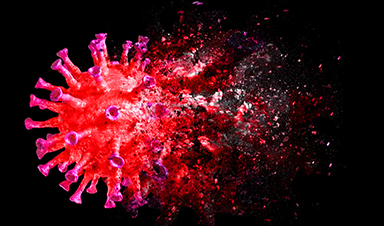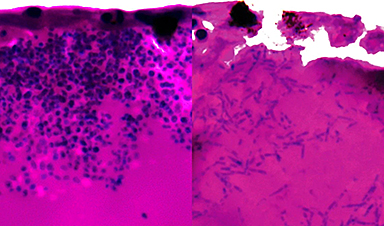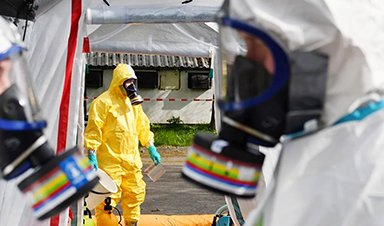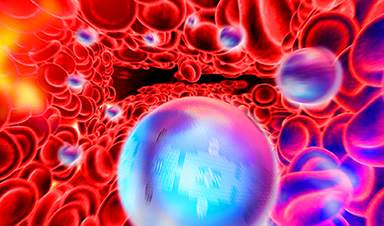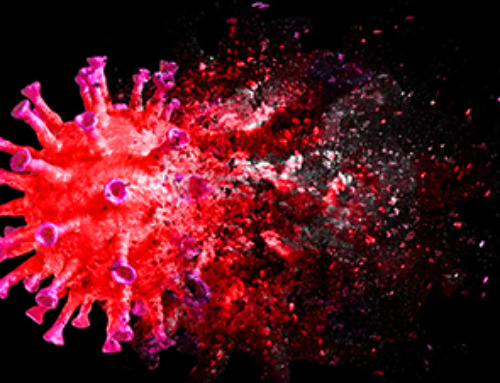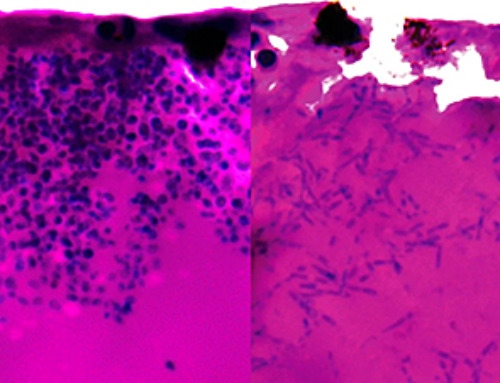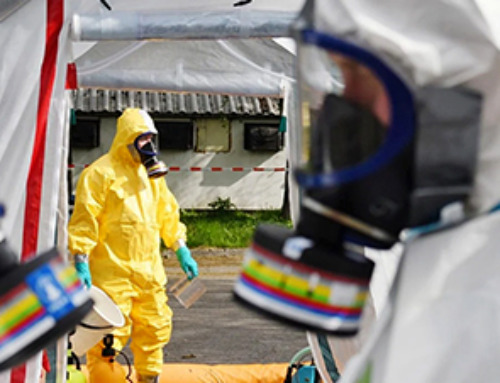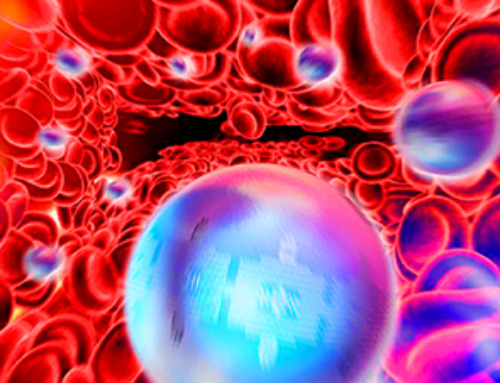As a team of South African researchers we have identified a new lineage of SARS-CoV-2, the virus causing COVID-19. A lineage represents a genetically distinct virus population with a common ancestor. This virus may be designated as a variant in future, based on significantly altered properties, but first we need to understand it better. Our findings so far are set out in a non pre-peer reviewed paper.
The new lineage, assigned the name C.1.2, has been found in all provinces in the country. While it shares some mutations with other variants, it is different in some respects.
Viruses mutate all the time. Sometimes the mutations result in an added benefit for the virus, such as increased transmissibility. But often mutations don’t do anything beneficial for the virus. So more mutations do not always mean trouble for us, its host.
For C.1.2, a lot is still unknown. For example, it’s too early to tell whether these mutations will affect transmissibility or vaccine efficacy.
The Network for Genomics Surveillance in South Africa has been monitoring changes in SARS-CoV-2 since March 2020. South Africa was one of the first countries globally to introduce systematic and coordinated genomic surveillance, sequencing genomes of SARS-CoV-2 from patient samples representative of different geographic regions and over time.
Its findings have provided insights into how and when SARS-CoV-2 was introduced into the country, and into its early spread. The Network has also been sequencing virus genomes to identify newly developing viral lineages of particular concern.
Later in 2020 the network detected what is now called the Beta variant of concern and more recently observed, almost in real-time, the arrival and rapid “take-over” of the Delta variant in South Africa.
What’s known, and what’s not known
We select patient samples from diagnostic laboratories throughout the country and perform sequencing to analyze the virus genomes. We then compare these sequences to those seen before and elsewhere. It’s very much like the game where you spot the difference between nearly identical pictures.
We’re playing spot the difference with SARS-CoV-2. When we find many differences – or differences in certain particularly important places like the spike of the virus – we pay special attention. We then look to see how often we see this particular virus and where – in one region of the country or in multiple regions, only in South Africa or also in other parts of the world. We also monitor whether it increases over time, which would suggest that it is replacing previous versions of the virus.
When we sequence the virus and compare it to other SARS-CoV-2 viruses it gets assigned a name based on the closest matching virus. We then look at the virus and the one that it matches to see how similar they are to each other. If we see a lot of differences that could be an indication of a new lineage.
In May 2021 we first detected a mutated group of related SARS-CoV-2 viruses in South Africa which has been assigned the lineage, C.1.2. So far, from May to August 2021, C.1.2 has been detected in all provinces. Yet it occurs at relatively low frequency and though we see small increases in this lineage overtime they remain very low.
This lineage possesses mutations within the genome that have been seen in other SARS-CoV-2 variants.
The network alerted the World Health Organisation (WHO) and the South African National Department of Health to this lineage in July. The two months between our first discovery and the notification comes from the lengthy process of sequencing and analysis. In addition, mutated viruses appear from time to time – but many disappear again. Therefore we needed to monitor this particular one to see if it would be detected in additional regions. Only when we started detecting it in other provinces and when it was reported also from other countries did we feel we had sufficient evidence to suggest a new lineage.
The surveillance network is continuing to monitor the frequency of the lineage across the country, and helping other African countries do the same. Also, tests to assess the functional impact of the mutations it harbors are under way – for example, how well do antibodies in people who have been vaccinated or infected previously neutralise the new virus, how well does it multiply in cell cultures compared to other virus variants, and so on.
The virus has not yet fulfilled the WHO criteria to be classified as a variant of interest or variant of concern. A variant of interest has genetic changes affecting important virus characteristics (transmissibility, disease severity, immune, diagnostic or therapeutic escape) and epidemiological impacts suggesting a risk to global public health. A variant of concern is the worst category – it’s a variant with proven increased transmissibility and/or virulence and/or decreased effectiveness of public health or medical tools such as vaccines, therapeutics, and tests.
Delta is a good example of a variant of concern that rapidly came to dominate the epidemic globally, causing major waves in many countries including those with advanced vaccination roll-out programs.
The C.1.2 lineage shares a few common mutations with all other variants of concern, including the Beta, Lambda, and Delta variants. But the new lineage has a number of additional mutations.
News
AI Helped Scientists Stop a Virus With One Tiny Change
Using AI, researchers identified one tiny molecular interaction that viruses need to infect cells. Disrupting it stopped the virus before infection could begin. Washington State University scientists have uncovered a method to interfere with a key [...]
Deadly Hospital Fungus May Finally Have a Weakness
A deadly, drug-resistant hospital fungus may finally have a weakness—and scientists think they’ve found it. Researchers have identified a genetic process that could open the door to new treatments for a dangerous fungal infection [...]
Fever-Proof Bird Flu Variant Could Fuel the Next Pandemic
Bird flu viruses present a significant risk to humans because they can continue replicating at temperatures higher than a typical fever. Fever is one of the body’s main tools for slowing or stopping viral [...]
What could the future of nanoscience look like?
Society has a lot to thank for nanoscience. From improved health monitoring to reducing the size of electronics, scientists’ ability to delve deeper and better understand chemistry at the nanoscale has opened up numerous [...]
Scientists Melt Cancer’s Hidden “Power Hubs” and Stop Tumor Growth
Researchers discovered that in a rare kidney cancer, RNA builds droplet-like hubs that act as growth control centers inside tumor cells. By engineering a molecular switch to dissolve these hubs, they were able to halt cancer [...]
Platelet-inspired nanoparticles could improve treatment of inflammatory diseases
Scientists have developed platelet-inspired nanoparticles that deliver anti-inflammatory drugs directly to brain-computer interface implants, doubling their effectiveness. Scientists have found a way to improve the performance of brain-computer interface (BCI) electrodes by delivering anti-inflammatory drugs directly [...]
After 150 years, a new chapter in cancer therapy is finally beginning
For decades, researchers have been looking for ways to destroy cancer cells in a targeted manner without further weakening the body. But for many patients whose immune system is severely impaired by chemotherapy or radiation, [...]
Older chemical libraries show promise for fighting resistant strains of COVID-19 virus
SARS‑CoV‑2, the virus that causes COVID-19, continues to mutate, with some newer strains becoming less responsive to current antiviral treatments like Paxlovid. Now, University of California San Diego scientists and an international team of [...]
Lower doses of immunotherapy for skin cancer give better results, study suggests
According to a new study, lower doses of approved immunotherapy for malignant melanoma can give better results against tumors, while reducing side effects. This is reported by researchers at Karolinska Institutet in the Journal of the National [...]
Researchers highlight five pathways through which microplastics can harm the brain
Microplastics could be fueling neurodegenerative diseases like Alzheimer's and Parkinson's, with a new study highlighting five ways microplastics can trigger inflammation and damage in the brain. More than 57 million people live with dementia, [...]
Tiny Metal Nanodots Obliterate Cancer Cells While Largely Sparing Healthy Tissue
Scientists have developed tiny metal-oxide particles that push cancer cells past their stress limits while sparing healthy tissue. An international team led by RMIT University has developed tiny particles called nanodots, crafted from a metallic compound, [...]
Gold Nanoclusters Could Supercharge Quantum Computers
Researchers found that gold “super atoms” can behave like the atoms in top-tier quantum systems—only far easier to scale. These tiny clusters can be customized at the molecular level, offering a powerful, tunable foundation [...]
A single shot of HPV vaccine may be enough to fight cervical cancer, study finds
WASHINGTON -- A single HPV vaccination appears just as effective as two doses at preventing the viral infection that causes cervical cancer, researchers reported Wednesday. HPV, or human papillomavirus, is very common and spread [...]
New technique overcomes technological barrier in 3D brain imaging
Scientists at the Swiss Light Source SLS have succeeded in mapping a piece of brain tissue in 3D at unprecedented resolution using X-rays, non-destructively. The breakthrough overcomes a long-standing technological barrier that had limited [...]
Scientists Uncover Hidden Blood Pattern in Long COVID
Researchers found persistent microclot and NET structures in Long COVID blood that may explain long-lasting symptoms. Researchers examining Long COVID have identified a structural connection between circulating microclots and neutrophil extracellular traps (NETs). The [...]
This Cellular Trick Helps Cancer Spread, but Could Also Stop It
Groups of normal cbiells can sense far into their surroundings, helping explain cancer cell migration. Understanding this ability could lead to new ways to limit tumor spread. The tale of the princess and the [...]

